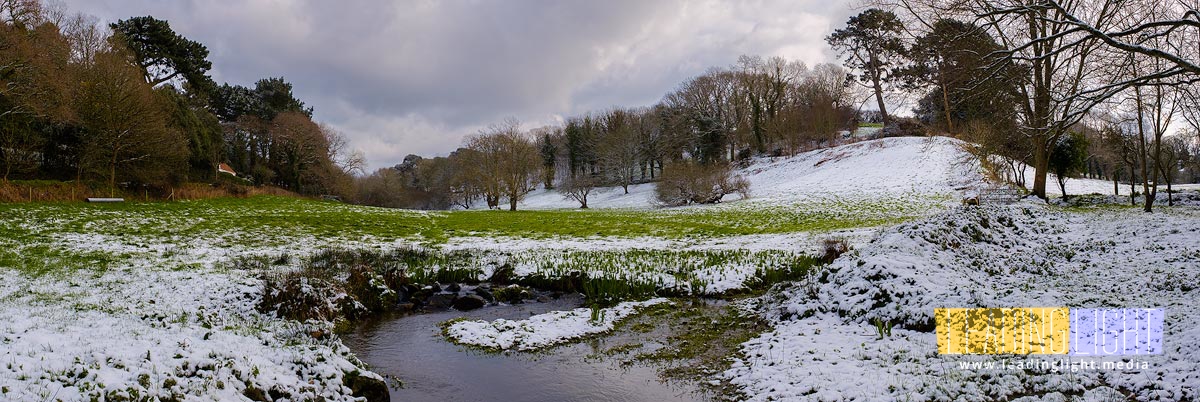It’s rare that Guernsey receives any significant snowfall and having been four years since the last major event, I had been monitoring the ‘Beast from the East’ closely. Occasionally a meteorological event occurs high over the Arctic where the air is warmed, disrupting the ‘Polar Vortex’, which is largely responsible for sucking our weather from the West to the East. High pressure helped a funnel of cold air to pass over Europe from Siberia, which is often a bit ‘nippy’. As it hit the North Sea and English Channel, it picked up moisture, froze it and dumped it back down as snow. Throughout the evening before, I monitored rainfall radar images which showed a conveyor-belt of heavy snow showers running down the centre of the English Channel which persisted throughout the night and the following day. Guernsey caught the bottom edge of this band, which avoided neighbouring Jersey almost entirely.
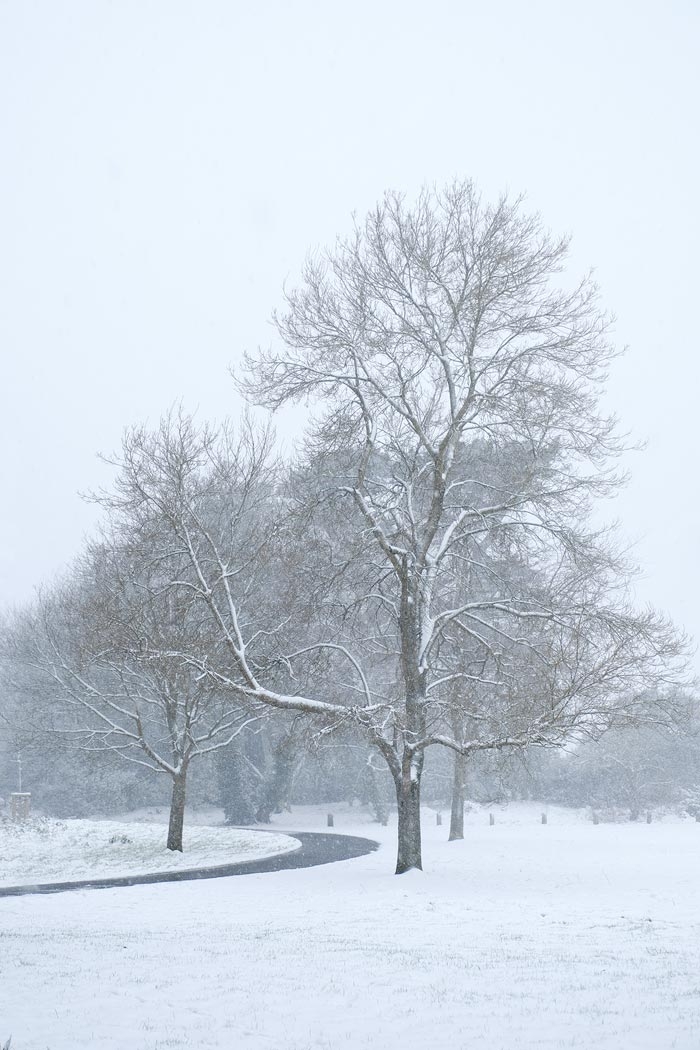
I awoke before first-light to see snow covered rooftops so I chugged a hot coffee, wrapped up warm, grabbed my camera and headed out to see what I could find. I was out before any roads had been treated and the surface was very icy. Heading toward town with the intention of going into the higher parishes, which usually accumulate more snow, I soon changed my mind. I’d always previously driven reliable 4-wheel-drives in snowfall and I wasn’t sure how my little junk car would handle the icy hills. Instead I turned around and stuck to the flat roads North to L’Ancresse Common. Driving very cautiously, my little Polo did me proud and got me there without incident.
The NorthEast wind was bitterly cold and a few centimetres of snow lay across the common - not a fairytale covering by any stretch - taller grass was still able to break the surface and the thick snow-blanket I hoped for hadn’t quite materialised. However, there was still more than enough for some interesting photos, given snow’s rarity in Guernsey.
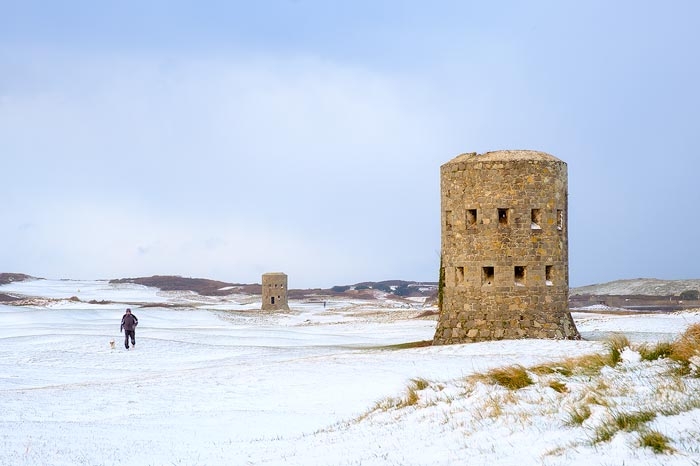
I concentrated mainly on photographing scenes around the Common’s ancient Martello towers and stayed out until I could no longer feel my face or fingers, as heavy but short-lived blizzards did their best to turn me into an ice-statue. Between showers it was possible to see some way into the Channel, where a procession of giant near-black clouds marched threateningly, parallel to the coast. I’m certain the worst of the weather never made landfall. Numb, I headed homeward for a warm bath and breakfast, feeling more confident in my driving now.
Throughout the day, the snow appeared to barely cling on, slowly melting but being refreshed with new snowfall from occasional heavy showers. I went back out early in the afternoon and headed for higher ground.
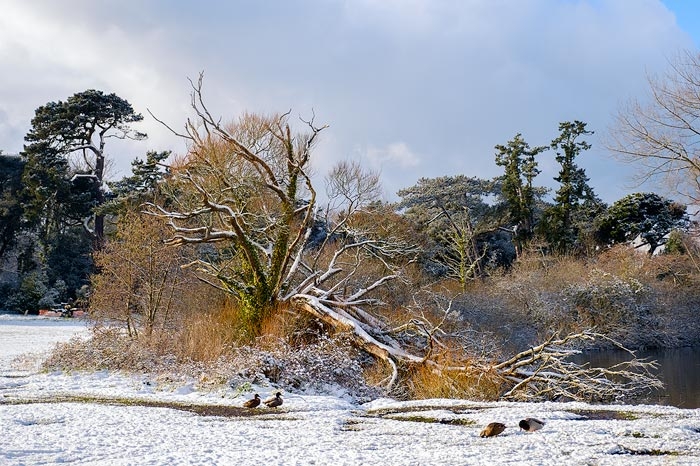
In most places the snow seemed thinner than in the north of the island, suggesting that we really had just caught the bottom edge of the severe weather. At Talbot valley, I tried for a photo of a quaint waterwheel attached to the gable of an old mill but I failed to find a scene that really worked for me. Further down the valley I managed to shoot a panoramic across the fields, but the snow had thinned enough to expose much of the grass. Realising that time was against me and the conditions wouldn’t last, I stayed out to explore as much of the island as possible, until dark.
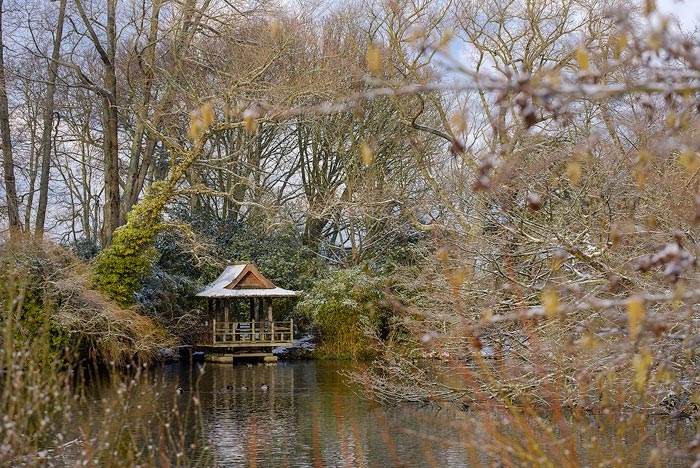
Next stop was Saumarez Park and it looked beautiful. A good layer of snow covered most of the ground and more was blowing in. The scenery changed almost by the minute as heavy showers and white-out conditions cleared to reveal warm sunlight and blue sky. While the park had some visitors, I was almost sad to see so few children playing in what, as a kid, I would have described as decent snow. Perhaps they’d all found somewhere better and, perhaps, I should be thankful that I was able to avoid an otherwise inevitable snowball in the face. I couldn’t resist a photograph of the well-known pagoda over the duck pond. While not showing much snow, the image still has a wintery feel and the warm, low sunshine falling onto it was too good to ignore. I walked around the park and within minutes another blizzard rendered the scenery grey and white, with only the surrounding trees showing any shape.
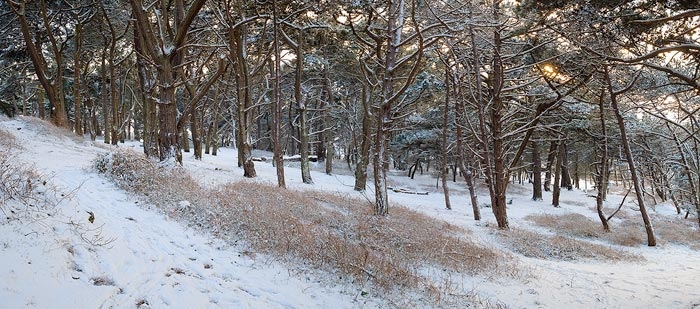
Lastly I drove down the road to Le Guet - a small hill on the coast wooded with Pine-trees. I didn’t expect much from this location but knew the popular viewpoint overlooking Cobo would offer an interesting, if not-very imaginative photo. The floor of the wood actually had a reasonable covering of snow so I spent some time photographing among the trees to begin with. The viewpoint at the end of a small clifftop fortress was very exposed but for the moment, the sky was clear and orange sunlight filtered between the trees, making an interesting shot looking down through them. On the other side, overlooking Cobo Bay and beyond, the showers out to sea looked magnificent with orange and yellow light reflecting off their solid blackness, clearly dumping masses of snow into the English Channel. I managed only a couple of shots before being enveloped by the heaviest shower of the day, rendering everything beyond a couple of metres invisible. By this time the sun was just about setting and my day was over.
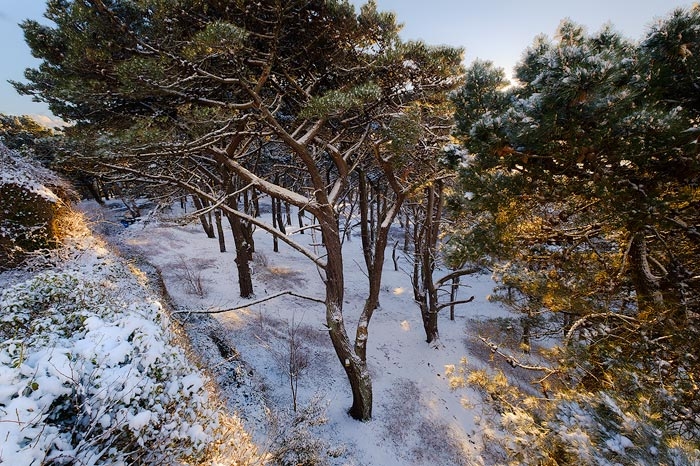
Some snow persisted on the following day but was far more patchy and continual melting and re-freezing made the roads icy and dangerous. With little sunlight and grey overcast cloud, I was certain that we’d already seen the best of the snowy conditions so I opted for a warm day indoors as the tail of the Beast quietly passed by and everything quickly returned to normal.
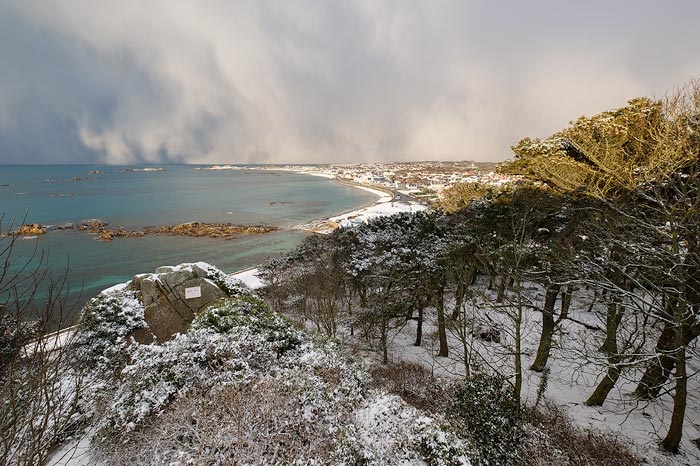
Please help me get seen
Thank you for taking the time to view this page. Please feel free to leave a reply below and if you like what you've seen, you can do me a huge favour by sharing this page using the buttons below.

